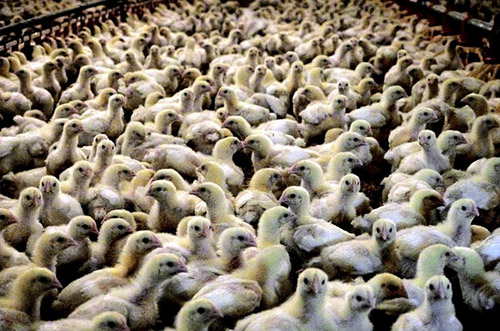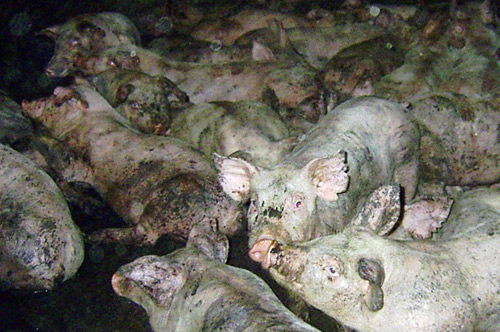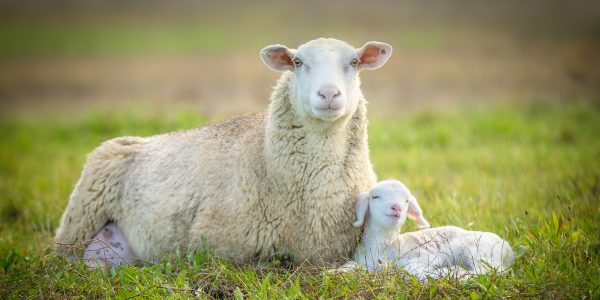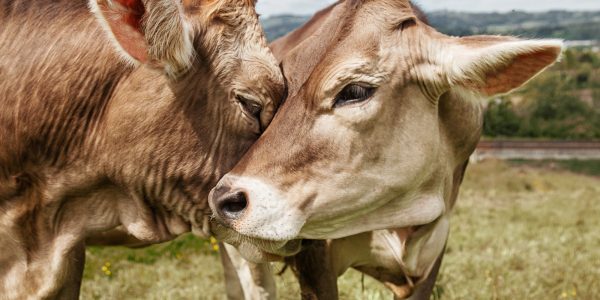A future where commonplace illnesses, injuries and infections could once again become fatal… Find out how drugs given to animals raised for food are connected to what the World Health Organization (WHO) calls ‘a problem so serious that it threatens the achievements of modern medicine.’
Before the mid-1940s a tooth abscess might have killed, scarlet fever was often lethal and gangrene claimed limbs as a matter of course. If three people caught pneumonia, it was likely that only two — or even one — would survive…[1]
Then the ‘wonder drug’ penicillin came along, and suddenly the future looked entirely different. Developing antibiotics to treat bacterial infections was one of the most significant medical leaps ever taken by humanity — saving countless millions of lives.
Over time, various strains of bacteria became resistant to penicillin and many of its close relatives — but new and more powerful antibiotics were developed. This cycle continued, with medicine so far managing to stay a step ahead, although very few major new types of antibiotics have been approved for use in the last 30 years…[2][3]
A disturbing new era?
Antibiotics are a class of antimicrobial, along with agents like antifungals and antivirals.
“Antimicrobial resistance occurs when microorganisms such as bacteria, viruses, fungi and parasites change in ways that render the medications used to cure the infections they cause ineffective.”
— World Health Organization
‘Superbugs’ are bacteria that have become resistant to more than one antibiotic, making them more difficult to treat effectively. They are also known as multidrug-resistant (MDR) bacteria.
WHO warns that superbug strains of bacteria that can lead to serious illness including tuberculosis, meningitis, pneumonia, salmonella and staphylococcus aureus (‘golden staph’) have already emerged around the world.
Never has the threat of antimicrobial resistance been more immediate and the need for solutions more urgent.
In some cases, antibacterial resistance has developed to the point that so-called ‘last resort’ antibiotics must be used to treat infections — potentially driving even further resistance and the possibility of losing access to effective antibiotics altogether.
Over-prescription and misuse of antibiotics in human medicine is contributing significantly to this problem. In fact, in October 2019 the body that advises the Australian Government on pharmaceutical medicines recommended a crackdown on repeat prescriptions for a range of antibiotics, amid fears about drug-resistant superbugs.
But antibiotics aren’t just given to humans. Animals in factory farms can be dosed with antibiotics in their feed and water, which has led to antibiotic-resistant bacteria – including ‘superbugs’ – on chicken and pig meat sold through major Australian retailers.
Down on the farm
“[I]n an intensive chicken rearing facility if you get one or two animals that get an infection, it’s quite common for vets to decide they need to treat all the chickens in the facility just in case it has already spread to others that are not noticeably sick.”
— Professor Christopher Thomas, Birmingham University
Globally, a large proportion of all antibiotics produced is given to farmed animals — to treat illnesses; as a preventive measure, especially when high numbers of animals are kept in close confinement; and to make them grow faster and bigger.[4]
WHO says this increases the risk of resistant bacteria developing in animals and crossing over to cause infections in people.
While it’s difficult to directly compare the quantity of antibiotic drugs given to farmed animals with that used in human medicine — because of differences in population, usage and dosages — there’s evidence that a greater volume is used in animal agriculture.[5]
This image contains content which some may find confronting

Using antibiotics as growth promoters has been banned in the EU since 2006 but is still common in the US, Australia and elsewhere in the world.[6]
Most concerning is when animals raised for food are treated with drugs considered ‘critically important’ to human health, like later-generation cephalosporins and fluoroquinolones.[7]
Cephalosporins are a class of antibiotic, sometimes grouped into “generations” by their chronological development (usually in response to bacterial resistance [8]) and antimicrobial properties. Third- and fourth-generation cephalosporins are listed by the WHO as ‘critically important’ to human health.[9]
Worryingly, many of these drugs are regularly used in animal agriculture internationally. For example, industrial fish farms in Chile reportedly use large amounts of fluoroquinolones; and, around the world, billions of chickens receive third-generation cephalosporins to treat infections as day-old chicks or even before hatching from their eggs, resulting in “large reservoirs of resistant bacteria.”[10]
The Australian story
“There is widespread use of antibiotics in the pig industry to deal with the respiratory and gastrointestinal disease problems… (In cattle and sheep) there is significant antimicrobial use particularly in the more intensive practices of feed-lotting (e.g. to control respiratory diseases and problems with feeding grain/high energy feeds) and dairy farming (particularly for mastitis control).”
— Australian AMR One-Health Colloquium Participant Paper
While animals raised for food in Australia are dosed with a broad range of antimicrobials for therapeutic, preventive and growth-promoting purposes[11], we’re at least in a relatively strong position when it comes to some of the antibiotics considered ‘critically important’ to human health.
“The fundamental cause of food animal-related antibiotic resistance is factory farming. In intensive pig and poultry production, animals are kept confined in overcrowded conditions, usually with no outdoor access, and they are bred and managed for maximum yield (to grow faster or to produce more meat, milk, eggs, or offspring). These conditions compromise their health and their immune responses and encourage infectious disease to develop and spread easily.”
— Compassion in World Farming
Responsibility for registering antimicrobial drugs for use in animal agriculture in Australia lies with the Australian Pesticides and Veterinary Medicines Authority (APVMA), which, for instance, hasn’t approved fluoroquinolones for use in farmed animals. And the Australian Veterinary Association (AVA) has also taken steps to address the issue of antimicrobial resistance, including developing guidelines for prescribing and authorising the use of antibiotics.
But even in Australia, a third-generation cephalosporin called ceftiofur is sold for use in cattle and sheep[12] — and a 2018 study reported that it had been administered to Australian pigs, resulting in resistance still measurable after four years.[13]
This image contains content which some may find confronting

According to Emeritus Professor Mary Barton of the University of South Australia, while the situation is better in Australia than many other parts of the world, we need to do more before the problem gets out of hand.[14] Highlighting the pressing nature of the issue, in recent years methicillin-resistant staphylococcus aureus (MRSA) was detected for the first time in Australian pigs.[15]
Researchers from institutes worldwide — including the University of Wollongong — have also formed an international consortium to follow a major development in the global antimicrobial resistance crisis: colistin resistance.
Colistin is considered a last resort drug for treating multidrug-resistant Salmonella, and resistance to it has finally arrived in the USA. First reported in China, the gene responsible for colistin resistance, mcr-3.1, has since been discovered in countries as far-flung as Australia and Canada.[16]
There is no time to wait. Unless the world acts urgently, antimicrobial resistance will have disastrous impact within a generation.[17]
Falling through the cracks?
Disturbingly, there’s still no national system to monitor how many antibiotics are given to farmed animals in Australia.
“Information in Australia is limited because we don’t have a systematic surveillance program for antimicrobial resistance in animals… More needs to be done to understand antimicrobial use in all animals and to what extent this is contributing to antimicrobial resistance to humans.”
— Emeritus Professor Mary Barton AO, University of South Australia
Figures collected by the APVMA are limited to total weights sold, and only reported on a voluntary basis by pharmaceutical companies, severely limiting the scope of monitoring efforts. There is also still no national surveillance program to monitor levels of resistance to microbials in farmed animals[18], though some limited industry research has started.[19]
As far back as 1999, the Australian Government established the Joint Expert Advisory Committee on Antibiotic Resistance (JETACAR), which provided a whole suite of recommended actions to fight antimicrobial resistance. But the momentum generated by JETACAR seemed to fizzle out, and various committees and working groups initiated in the following two decades failed to achieve significant practical changes in relation to animals.
“[N]o one knows if the use of antibiotics in industry is increasing or decreasing.”
— Dr Ben Gardiner, President of the Australian Veterinary Association, May 2014
In 2019 the Australian Government responded to a 2013 Senate Committee report on JETACAR’s 22 recommendations. According to this response, systems to monitor the use of antimicrobials in Australian animals, and national surveillance of resistance levels, are “being developed”.[20]
Hopefully, Australia’s National Antimicrobial Resistance Strategy‚ 2020 and Beyond, launched in March 2020, will see major steps taken urgently though the strategy highlights that while the Antimicrobial Use and Resistance in Australia (AURA) monitoring system is providing national data in human health, “[c]omparable progress in surveillance across the animal health or environment sectors has not been made”.[21]
If we fail to act, we are looking at an almost unthinkable scenario where antibiotics no longer work and we are cast back into the dark ages of medicine where treatable infections and injuries will kill once again.
Time to move — and think
We don’t need a repeat of the Dark Ages. It’s time for our government authorities and industries to work together in a strategic way to deal with antimicrobial resistance — and to look beyond Australia’s borders in doing so.
Regardless of precautions taken in our own country, experts have warned that in this age of frequent international travel and universal food supply chains, the global risk of antimicrobial resistance is Australia’s risk, too.
Genuinely rethinking how our society views and treats animals is fundamental to this. When the way we farm animals — as though they’re cogs in a factory with no value beyond what their bodies can produce — means they have to be so heavily medicated, something is seriously wrong.
How you can help
While the threat of superbugs is a complex problem, one thing that’s clear is that the push to increase growth rates and productivity in intensive animal farms (also known as ‘factory farms’) is only making the threat more serious.
The good news is we all have the power to take a stand against superbugs and factory farming cruelty, starting today.
- Urge major Australian supermarkets to ban routine antibiotic use – our recent investigation found dangerous antibiotic-resistant bacteria on chicken and pig meat being sold through major retailers which have an ethical responsibility to be part of the solution.
- Factory farming only exists because so many animals are being eaten, which drives up stocking rates — and necessitates the use of antibiotics. Replacing animal products in our meals with plant-based alternatives is one of the most profound ways to reduce animal suffering.
Keen to find out more? You’ll find all the information you need, plus a selection of delicious recipes, in our free Veg Starter Kit! Order your copy here. Or if you’re ready to get cooking right away, then you might like to browse our collection of 100+ scrumptious plant-based recipes at VegKit.com!
Learn more:
- “Crackdown recommended on antibiotic over prescription”, ABC Radio National AM, 08 October 2019, https://www.abc.net.au/radio/programs/am/crackdown-recommended-on-antibiotic-over-prescription/11581450
- “Farm animals are the next big antibiotic resistance threat”, Wired, 19 September 2019, https://www.wired.com/story/farm-animals-are-the-next-big-antibiotic-resistance-threat/
- “Superbug hotspots emerging in farms across globe study”, The Guardian, 20 September 2019, https://www.theguardian.com/environment/2019/sep/19/superbug-hotspots-emerging-in-farms-across-globe-study
- “The hidden link between farm antibiotics and human illness”, Wired, 09 July 2018, https://www.wired.com/story/farm-antibiotics-human-illness-hidden-link/
- “Deadly Germs. Lost Cures. Warning of ‘Pig Zero’: One drugmaker’s push to sell more antibiotics”, New York Times, 7 June 2019, https://www.nytimes.com/2019/06/07/health/drug-companies-antibiotics-resistance.html
- “Antibiotic resistant superbugs ‘will kill 90,000 Britons by 2050′”, The Guardian, 08 November 2018, https://www.theguardian.com/society/2018/nov/07/antibiotic-resistant-superbugs-will-kill-90000-britons-by-2050
- “To get antibiotics off your plate, vote with your wallet”, Wired, 20 December 2018, https://www.wired.com/story/antibiotics-fda-regulation-vote-with-your-wallet/
- “Stop using antibiotics in healthy animals to prevent the spread of antibiotic resistance”, World Health Organisation, 7 November 2017, https://www.who.int/news-room/detail/07-11-2017-stop-using-antibiotics-in-healthy-animals-to-prevent-the-spread-of-antibiotic-resistance
- “Global trends in antimicrobial use in food animals”, Proceedings of the National Academy of Sciences of the United States of America, 19 March 2015, https://www.pnas.org/content/112/18/5649
References
[1] Podolsky, S 2006, Pneumonia before antibiotics: Therapeutic evolution and evaluation in twentieth-century America, Johns Hopkins University Press
[2] World Health Organization, 2020, News release: News release: Lack of new antibiotics threatens global efforts to contain drug-resistant infections
[3] Infectious Diseases Hub, 2019, News release: First new oral and IV antibiotic with novel mechanism of action approved in nearly two decades
[4] US Center for Disease Control, 2013 Antibiotic Resistance Threats in the United States
[5] ibid
[6] Australian Pesticides and Veterinary Medicines Authority 2017,Antibiotic resistance in animals: A report for the APVMA
[7] Collignon P, Powers J, Chiller T, Aidara-Kane A & Aarestrup F 2009, “World Health Organization Ranking of Antimicrobials According to Their Importance in Human Medicine: A Critical Step for Developing Risk Management Strategies for the Use of Antimicrobials in Food Production Animals”, Clinical Infectious Diseases 2009; 49:13241
[8] Theuretzbacher, U 2011, “Resistance drives antibacterial drug development”, Current Opinion in Pharmacology, vol 11, no 5, p438
[9] World Health Organization (WHO), 2016, WHO list of Critically Important Antimicrobials, 5th Revision
[10] Collignon P, Aarestrup FM, Irwin R & McEwen, S 2013, “Human Deaths and Third-Generation Cephalosporin use in Poultry, Europe”, Letter to the Editor, Emerging Infectious Diseases, Vol. 19, No. 8, August 2013
[11] Australian Pesticides and Veterinary Medicine Authority (APVMA), 2014, Quantity of antimicrobial products sold for veterinary use in Australia 2005-2010
[12] ibid
[13] Abraham, S., Kirkwood, R.N., Laird, T. et al. Dissemination and persistence of extended-spectrum cephalosporin-resistance encoding IncI1-blaCTXM-1 plasmid among Escherichia coli in pigs. ISME J 12, 2352–2362 (2018). https://doi.org/10.1038/s41396-018-0200-3
[14] The Australian Veterinary Association 2014, “The global superbug crisis”, Media release 26 May 2014
[15] Groves M, O’Sullivan M, Huub J Brouwers, Chapman T, Abrahams S, Trott D, Al Jassim R, Coombs G, Skov R & Jordan D 2014, “Staphylococcus aureus ST398 detected in pigs in Australia”, J Antimicrob Chemother 2014, Advance Access publication 19 January 2014
[16] Pig Progress, 2019, Global partnership to fight antimicrobial resistance
[17] UN Interagency Coordination Group (IACG) on Antimicrobial Resistance, No Time To Wait: Securing The Future From Drug-Resistant Infections: Report To The Secretary-General Of The United Nations, April 2019
[18] Australian Pesticides and Veterinary Medicines Authority 2017, Antibiotic resistance in animals: A report for the APVMA
[19] Australian Government, 2020, Australia’s National Antimicrobial Resistance Strategy – 2020 and Beyond
[20] Australian Government, 2020, Response to the 2013 Senate Finance and Public Administration References Committee report: Progress in the implementation of the recommendations of the 1999 Joint Expert Technical Advisory Committee on Antibiotic Resistance
[21] Australian Government, 2020, Australia’s National Antimicrobial Resistance Strategy – 2020 and Beyond







